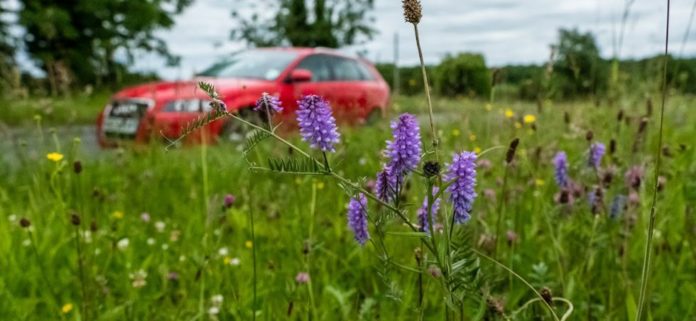New national guidelines released underline the huge benefits of road verges being cut less and later for wild flowers and the wildlife they underpin.
The Plantlife-led guidelines endorsed by highways agencies, industry and wildlife organisations provide a roadmap to fundamentally transform how 313,500 miles of UK road verges are managed.
Many verges are currently cut at least four times a year but the guidelines recommend a two-cut management programme that allows flowers to complete their full lifecycle rather than being cut down in their prime before they are able to set seed. The less and later two-cut approach endorsed by these guidelines would replenish the seed bank, restore floral diversity, save councils money and provide pollinator habitat estimated to equal the size of London, Birmingham, Manchester, Cardiff AND Edinburgh combined.
Fresh approaches to road verge management are essential considering there has been a 20% drop in floral diversity on road verges since 1990, partly due to poor or inappropriate management. Red clover and lady’s bedstraw, two of the six verge wild flowers that support the highest number of invertebrates – are amongst the plants experiencing the most rapid decline with adverse knock-on effects for wildlife. The marsh fritillary butterfly feeds almost exclusively on devil’s-bit scabious, so lives or dies according to the prospects of its food plant.
Given a staggering 97% of wildflower meadows have been eradicated in less than a century, grassland road verges are crucial wildlife habitats: they provide safe haven for over 700 species of wild flowers, nearly 45% of our total flora, including 29 of 52 species of wild orchid including rarities such as lizard orchid.
Plantlife’s new best practise guidance for highway authorities, their contractors and community groups has been produced in collaboration with Natural England, Scottish Natural Heritage, national highways agencies Highways England, Transport Scotland and Welsh Government, industry bodies Skanska and Kier, and wildlife organisations Butterfly Conservation and The Wildlife Trusts. It provides detailed information and case studies on road verge management and fulfils a recommendation in the UK Government’s National Pollinator Strategy.
Central to the guidelines is a clarion call for verges to be cut less and later each year. The report states: “Today, the majority of the UK’s grass road verges are either cut too frequently and at the wrong time, or abandoned to scrub … We need to manage our road verges as a nationally significant response to the decline of our wildlife, raising the management bar across the whole grassland estate not just on a few hundred miles of roadside nature reserve.”
A groundswell of support has bloomed for more wildlife-friendly management of verges. Dr Trevor Dines, Plantlife Botanical Specialist and an architect of Plantlife’s successful long-running public campaign, said: “At the end of a summer that has seen the state of our road verges debated across the national press, publishing these new guidelines endorsed by so many influential players is an exciting step forward. Widespread adoption of this best practice management by councils and their contractors could transform our road verge network, signalling an end to hard times on the soft estate. Grassy verges cover an area equivalent to ALL our remaining lowland species-rich grassland so this new approach can literally double the opportunities for wild flowers and wildlife.
“It’s heartening to see road verges increasingly recognised as wildlife havens, rather than the inconsequential ‘edgelands’ that flash by in the car wing mirror as we speed ahead with our busy lives. Where once there was a desire to see verges scalped to the bone for that neat-and-tidy look, there’s an increasing appetite for ‘messier’ verges that provide better cover and food for wildlife. As well as offering hope to some incredibly rare flowers like wood calamint and fen ragwort that now ONLY appear on road verges, the shift in public attitudes – reflected in the huge support for the Plantlife petition – means we could see more familiar flowers like cowslip, oxeye daisy, knapweed, tufted vetch and even orchids on our journeys.”







